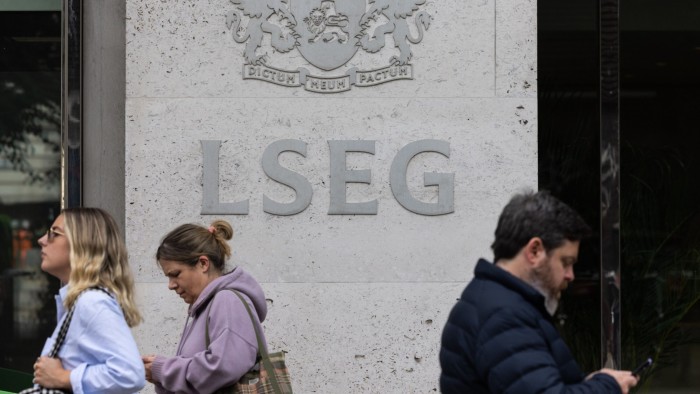Are you too passive about your passive investments?


Simply sign up to the Equities myFT Digest -- delivered directly to your inbox.
Beating the stock market by “active” investing is no longer the focus for many investors. Instead, investing in a passive or tracker fund, which follows a stock market index and delivers returns in line with the market average, has become the norm.
But are you too passive about your passives? If you’ve ignored them for a few years, your chosen investments might carry higher fees than they need to. With a little effort, you can power up your performance.
In the UK, retail investment platforms reported that Isa season in 2023 — around March and April — was well and truly owned by tracker funds. And the passive fund industry continues to advance on to the turf of active managers. Nine out of the 10 most popular funds bought by AJ Bell’s investors in the first half of 2023 were passive.
Analysts at the platform have speculated that these recent inflows might be investors nudging gently into a rocky market, biding their time before finding better opportunities. But I think it’s more of an entrenched pattern.
The latest data from the IA, which represents the fund management industry, found tracker funds received net retail inflows of £272mn in June 2023, taking their overall share of industry funds under management to 21 per cent.
The growth of passive investing is a global trend. In 2022, indexed vehicles recorded inflows of $747bn globally, while their actively managed counterparts shed $1.27tn. Passive funds managed to increase their share of the global market by 2.3 per cent to 38 per cent, according to Morningstar Direct data.
Passive investing is definitely the easy way to invest — long beloved of buy and hold “armchair” investors, who like to let their investments compound over the years. But I think more investors who are approaching retirement and have built assets of considerable value may want to reduce risk in their portfolios. And tracking an index reduces the risk that a portfolio manager makes the wrong call.
There’s also a growing body of academic evidence, which you can see helpfully collated at the Evidence-Based Investor blog, supporting the view that passive investing is the best way to go about it. For example, Morningstar’s research on funds that focus on the US equity market found that only 23 per cent of active managers outperformed their passive counterparts from 2010 to 2020.
Even if you still want to take a punt on active management in a bid to beat the stock market, you’re likely to be holding a decent chunk of your portfolio in trackers. So how can you get that working better for you?
First, if you haven’t looked at what’s available for a few years, consider the recent expansion of index funds.
Following what other passive investors are finding and buying is always interesting — it’s worth looking at popular passive funds on the three major UK retail investment platforms. Hargreaves Lansdown customers are still buying Legal & General products, probably due to the discounts that HL negotiates on that provider’s fees, while at AJ Bell and Interactive Investor, Vanguard and iShares products dominate.
I’d also look at exchange traded funds (ETFs), which track indices and often come with lower fees than index funds, while trading like shares. In 2022, 23 per cent of all fund launches were in ETFs, up from only 5 per cent in 2016, according to analysis from consultants Oliver Wyman.
A lot of ETF launches have been in thematic products that follow niche sectors. I’d be wary of chasing these new technologies as consumers may benefit but investors often don’t. If you’re going down that route, it can start to feel like active management again.
But if you chose to invest a few years back in a focused passive fund that was popular at the time, for example, China or another emerging market, it might be another reason to look again at your portfolio and reassess the overall balance and the wisdom of that earlier decision.
I’d consider newer low-cost rivals to traditional tracker funds. If you want to follow a global, US or UK equity index, which is all that many buy-and-hold investors want, there’s also a cheap ETF for that. For example, the SSGA SPDR MSCI World UCITS ETF tracks the MSCI World index for an ongoing charge of 0.12 per cent, while the Xtrackers S&P 500 UCITS ETF tracks the S&P 500 index of US stocks for 0.06 per cent.
The point is that if the passive fund that you chose on your platform 15 years ago seemed good value then, it might not be today. Even some products launched 10 years ago don’t compete on price. And there are still a few excruciatingly expensive legacy products around.
The biggest offender I could find is the L&G Tracker Trust CTF, which launched in 1999 and in 2023 still has an eye-watering ongoing charge of 1.56 per cent for the £1.3bn invested in the fund. As a child trust fund product, this hurts — the children invested in it are getting a very poor deal.
Cost may not be everything, but when it comes to passive investing it’s a key consideration.
The AJ Bell Manager versus Machine report found the most costly UK tracker fund is 21 times more expensive than its cheapest counterpart. It calculates an investor switching £10,000 from the former to the latter would be £6,627 better off after 20 years, assuming a 7 per cent gross annual growth rate.
For investors with more at stake, not switching to a better priced product can mean missing out on life-changing sums. Remember that although the price difference may look minimal, it can quickly escalate, so the time to act is always now.
Moira O’Neill is a freelance money and investment writer. She holds Vanguard LifeStrategy funds. X: @MoiraONeill, Instagram @MoiraOnMoney, email: moira.o’neill@ft.com
Comments